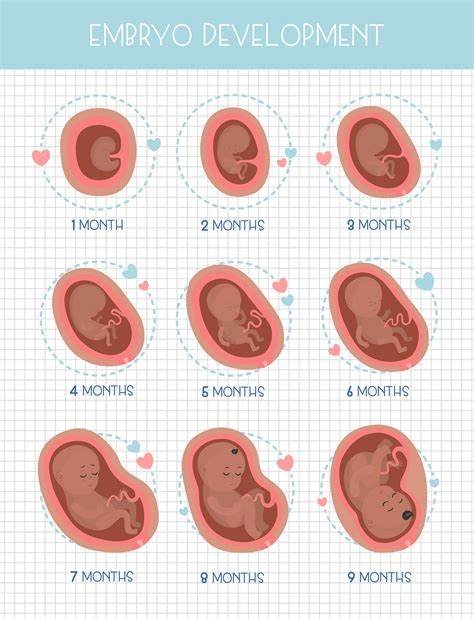
Pregnancy Exercises for All Trimesters
Staying active during pregnancy is important for both your health and the health of your baby. Exercise can help ease pregnancy discomfort, improve circulation, and boost energy levels. It can also help prepare your body for labor and delivery. In this post, we’ll cover pregnancy exercises for each trimester, helping you stay fit, safe, and comfortable throughout your pregnancy.

First Trimester: Gentle Exercises to Start
The first trimester is a time of significant change, and many women experience fatigue, nausea, or other early pregnancy symptoms. Despite these challenges, it’s still possible to stay active with gentle exercises that don’t strain the body. Start with light activities and listen to your body. Here are some great options for the first trimester:
- Walking: Walking is a low-impact exercise that’s easy on the joints. It helps improve cardiovascular health and keeps you active without putting too much strain on your body. Aim for a 20- to 30-minute walk most days of the week.
- Prenatal Yoga: Prenatal yoga focuses on gentle stretching, breathing, and relaxation techniques. It’s great for relieving stress and maintaining flexibility. Many yoga poses can help strengthen the muscles that support your growing belly.
- Pelvic Tilts: This simple exercise can help strengthen your abdominal muscles and relieve lower back pain. Lie on your back with your knees bent and feet flat on the floor. Gently tilt your pelvis upward while engaging your core muscles, then relax and repeat.
During the first trimester, it’s important to focus on low-impact exercises to keep your body in motion without overexerting yourself.
Second Trimester: Building Strength and Stamina
In the second trimester, your energy levels often increase, and you may start feeling more like your usual self. It’s a great time to incorporate a variety of exercises to build strength and endurance. However, be mindful of your growing belly and avoid any exercises that put too much strain on your body. Some great exercises for the second trimester include:
- Swimming: Swimming is a fantastic exercise during pregnancy. The water supports your body, reducing pressure on your joints, while the movement helps build strength and stamina. Swimming also relieves swelling and can be very soothing.
- Strength Training: Using light weights or resistance bands can help build muscle strength and improve posture. Focus on exercises that work your legs, arms, and back, such as squats, lunges, and bicep curls. Be sure to use proper form to avoid injury.
- Stationary Cycling: Cycling on a stationary bike provides a low-impact cardiovascular workout. It’s a great way to keep your legs strong and maintain your endurance. Start with a gentle pace and gradually increase the intensity as your stamina improves.
During this trimester, strength-building exercises help prepare your body for the physical demands of labor while improving circulation and reducing common pregnancy aches.
Third Trimester: Preparing for Labor and Delivery
The third trimester is a time when your body is preparing for childbirth. Exercises should focus on maintaining flexibility, strengthening muscles, and improving stamina to help you during labor. Here are some great options for the third trimester:
- Squats: Squats can help strengthen the muscles of your lower body, including your glutes and thighs. This will be helpful during labor when you may need to use these muscles for pushing. Stand with your feet shoulder-width apart, lower your hips toward the floor as if sitting in a chair, and then return to standing.
- Kegel Exercises: Kegels help strengthen your pelvic floor muscles, which support your uterus, bladder, and bowels. To do a Kegel, tighten the muscles as if you are stopping the flow of urine, hold for a few seconds, and then release. Doing Kegels regularly can help with labor and recovery.
- Prenatal Pilates: Prenatal Pilates focuses on strengthening the core muscles, which is important as your body adjusts to the weight of your growing baby. Pilates also emphasizes good posture, which can reduce back pain and help you feel more comfortable.
During the third trimester, it’s important to focus on exercises that prepare your body for the physical challenges of labor while helping you maintain flexibility and strength.
General Tips for Exercising During Pregnancy
Regardless of the trimester, there are a few important tips to keep in mind when exercising during pregnancy:
- Consult Your Healthcare Provider: Before beginning any exercise routine, it’s important to get approval from your healthcare provider, especially if you have any pregnancy complications.
- Stay Hydrated: Drink plenty of water before, during, and after exercise to stay hydrated and prevent overheating.
- Avoid Overexertion: Listen to your body and avoid exercises that cause discomfort, dizziness, or shortness of breath. It’s important to focus on how you feel, not how much you can do.
- Warm Up and Cool Down: Always begin with a warm-up and end with a cool-down to prevent injury. Stretching can help improve flexibility and prevent muscle strain.
Conclusion
Staying active throughout pregnancy has many benefits for both you and your baby. By incorporating pregnancy exercises that are safe and appropriate for each trimester, you can improve your strength, flexibility, and stamina. In the first trimester, focus on gentle movements like walking and prenatal yoga. During the second trimester, incorporate strength training and swimming. In the third trimester, exercises like squats and Kegels can prepare your body for labor. Always consult your healthcare provider before starting any exercise routine, and listen to your body throughout the process.






